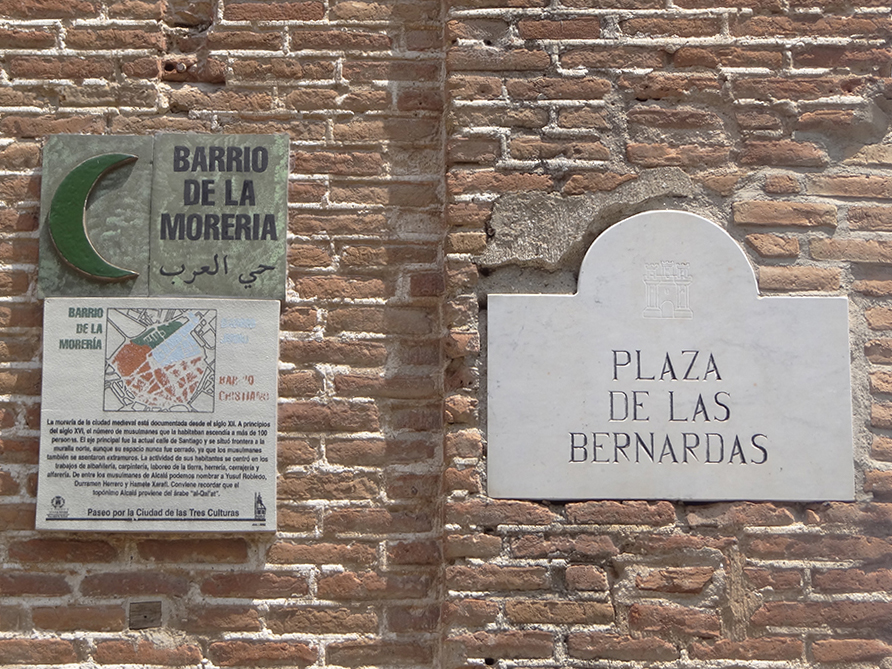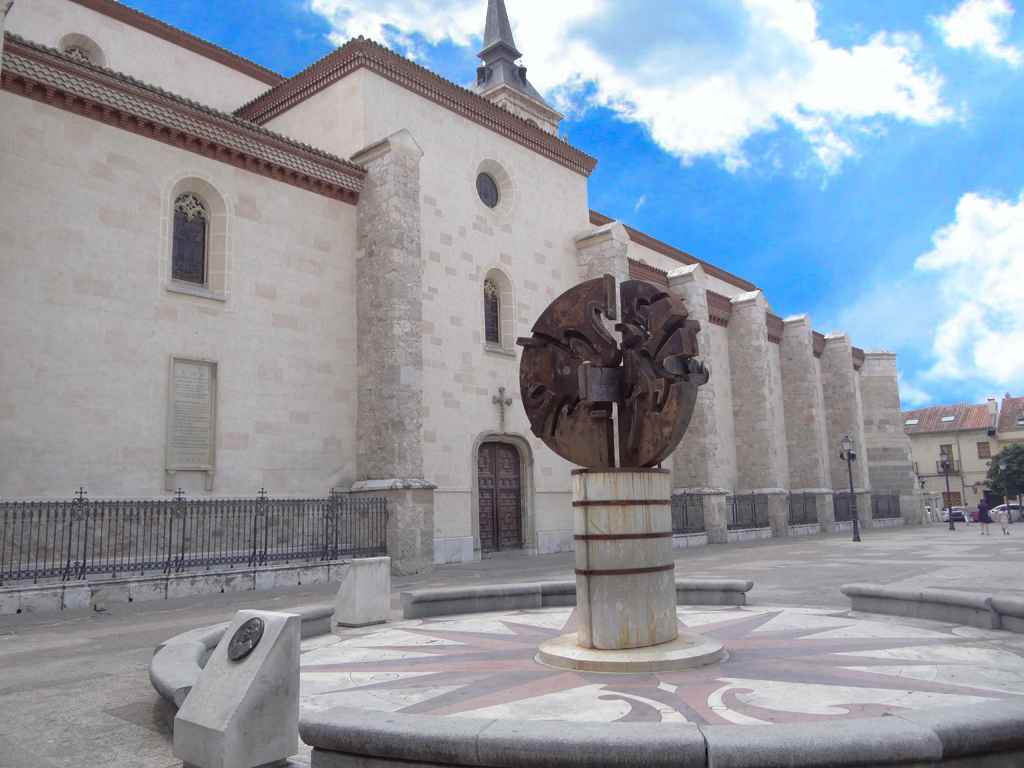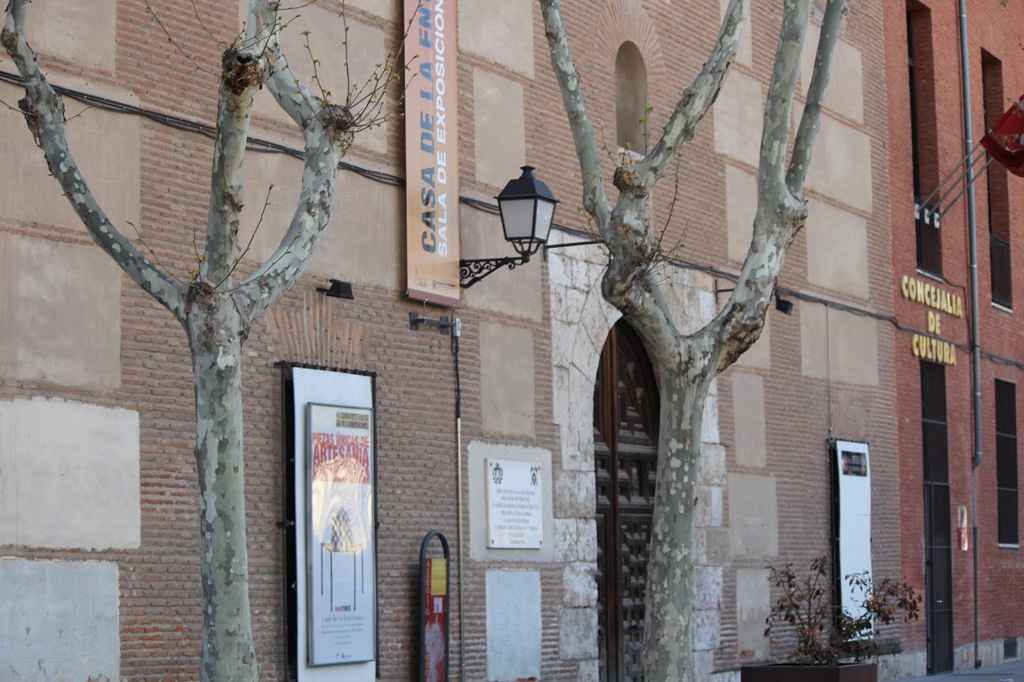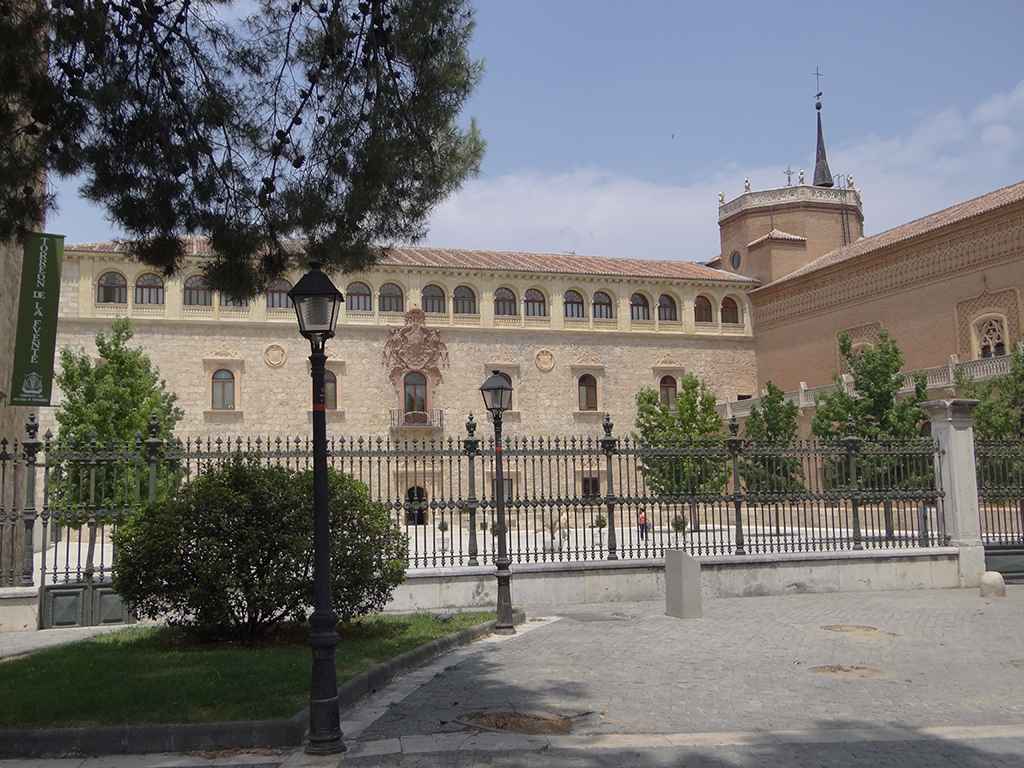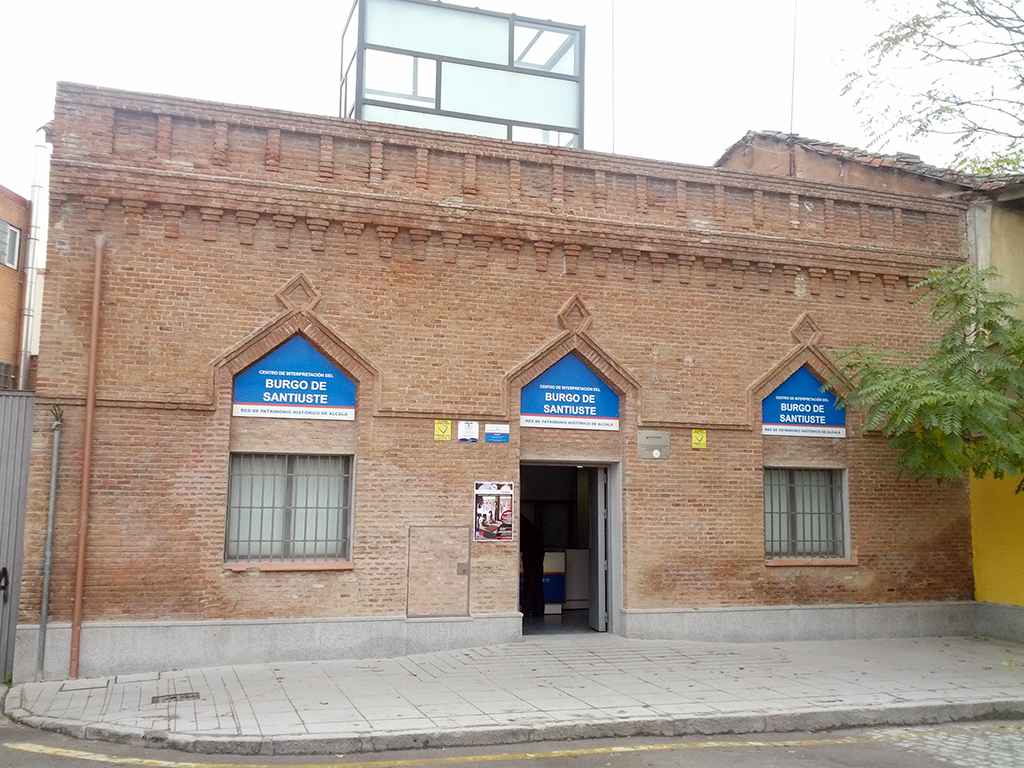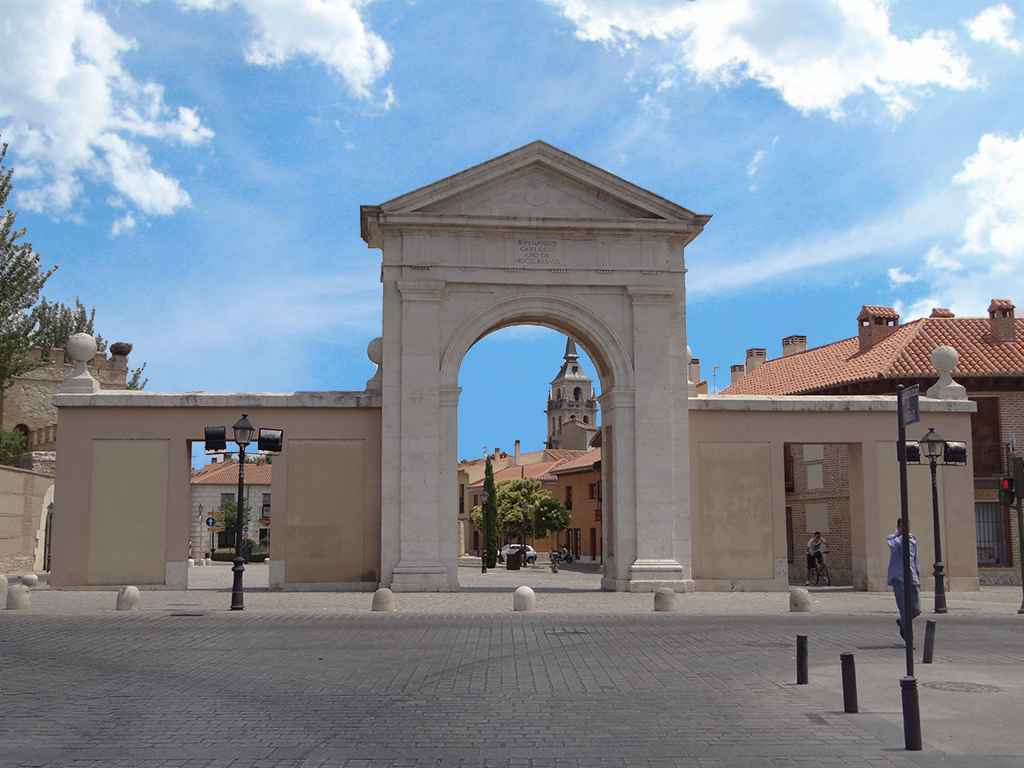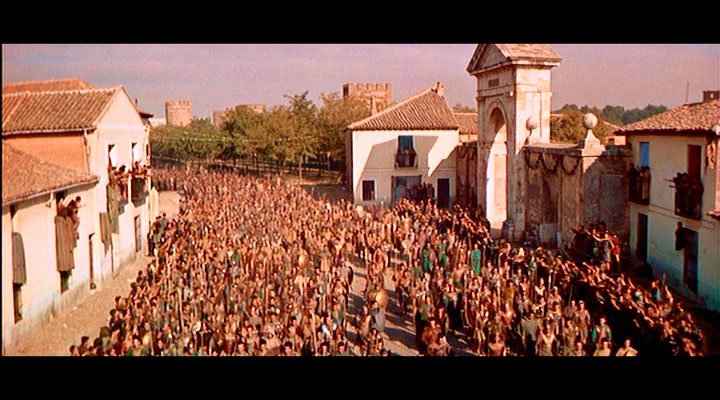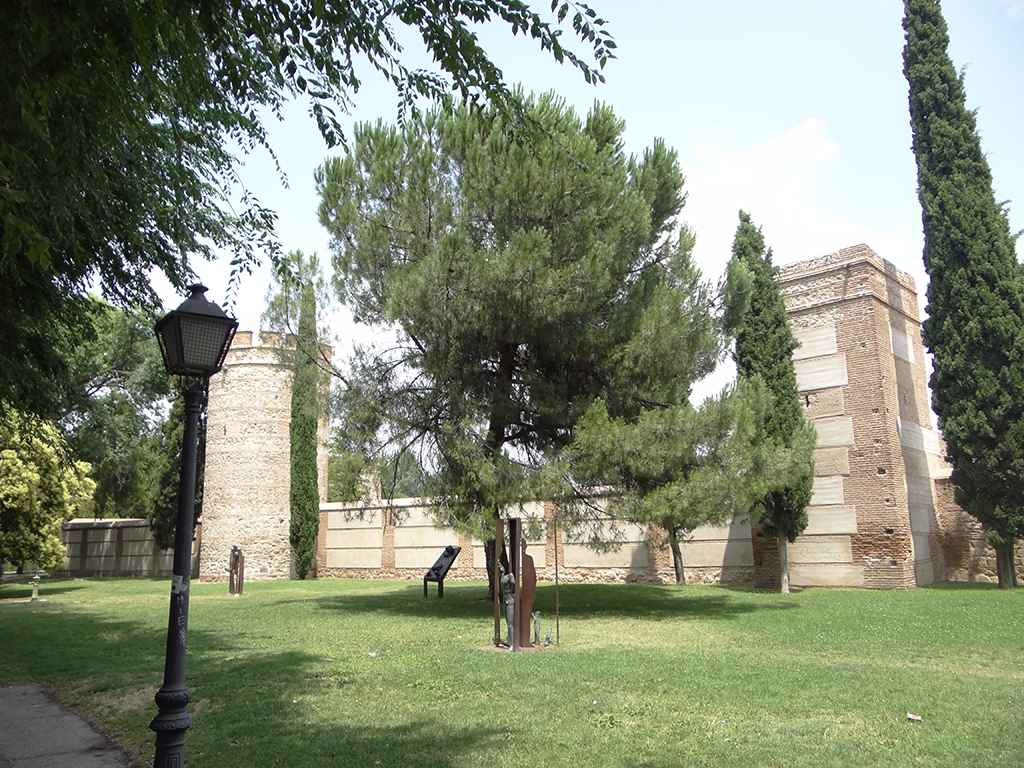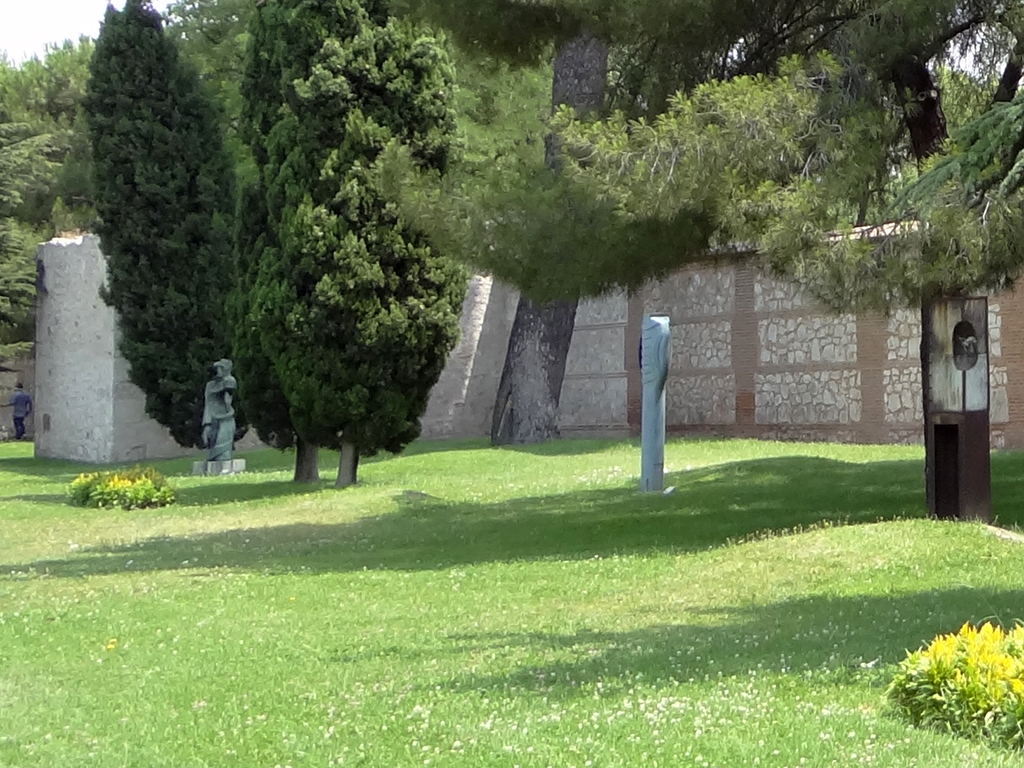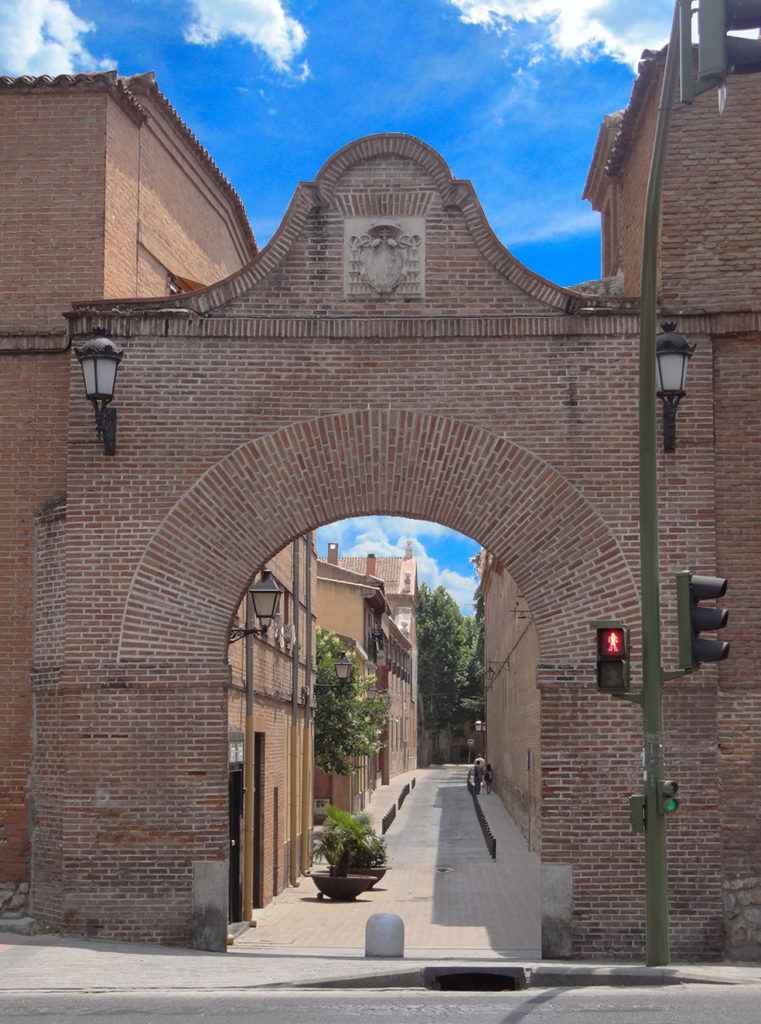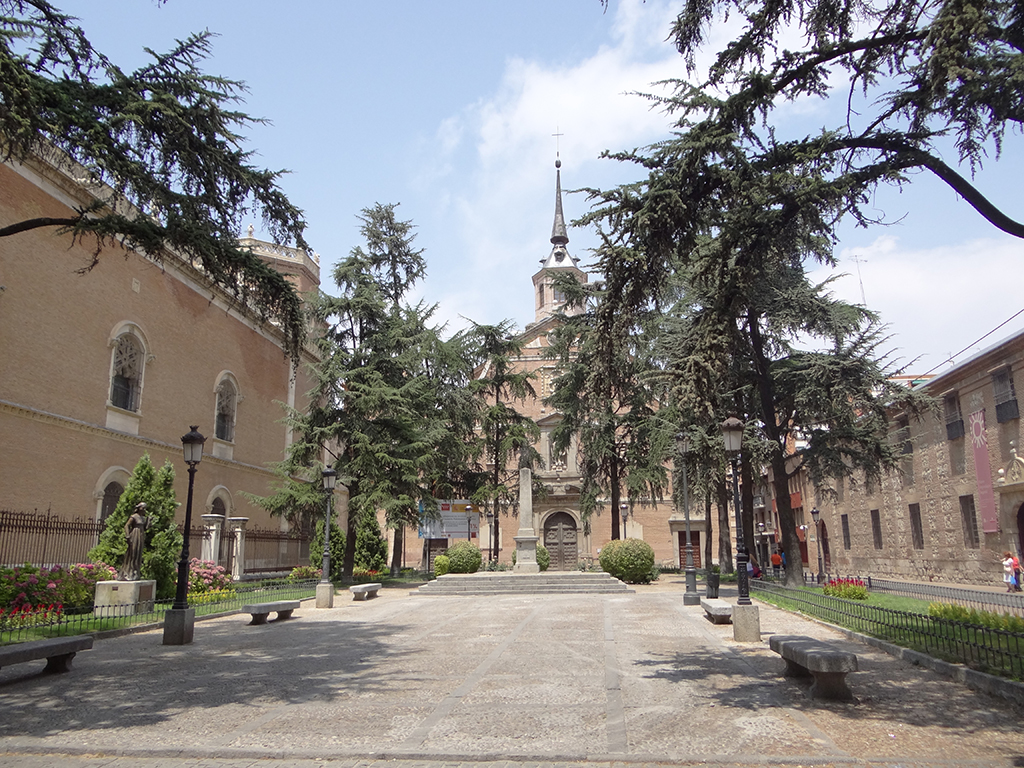The Second Monumental Horizon of Alcalá
The most important area for visiting Alcalá is located surrounding its urban center, plaza de Cervantes, where the City Hall is placed—, the university square —founded by Cardinal Cisneros—, the calle Mayor, the Birthplace Cervantes Museum and all its monuments, historical buildings and institutions placed in such route.
You can meet all those places and many others in the first part of our audio guide: Alcalá in just a morning. If you have already visited them and you are willing to continue, come with us in the second part of our journey.
The second monumental horizon is physically placed behind the first center, and starts in the small plaza de los Santos Niños, the one you will reach at the end of calle Mayor walking from plaza de Cervantes.
Calmness and Charm
The starting point is fixed in plaza de los Santos Niños, Justo y Pastor. The children that name the square were martyrized because of their Christian faith in the fourth century AC. Their remains rest in the Magisterial Cathedral, prod and solid set up in the square. The cathedral is full of curiosities about them and it is undoubtedly a must to visit. You can see the bell tower placed next to it. It was made by the architect of the façade of the Cisnerian University. If you climb to its top, also very recommendable, you will have magnificent panoramic sights of the whole Alcalá, especially of the West part, with Madrid at the back.
In order to know more about the Magisterial Cathedral, click here.
In order to know more about Santos Niños Justo y Pastor, click here.
In plaza de los Santos Niños itself, you can face the façade of the cathedral. Turning around the façade, you will be in front of calle San Juan, a lovely little street whose sidewalks are lined by trees.
At the middle of the street, on the left sidewalk, you can visit Casa de la Entrevista, an old convent whose name honors the interview between the Catholic Monarchs and Cristobal Columbus. The interview took place in the close Archbishop’s Palace and led to the organization of his voyages and the discovery of America on the part of the Castilian and Aragon crowns. Now, this is a cultural center dedicated to temporary exhibitions of painting and plastic arts.
In order to know more about Casa de la Entrevista, click here.
Continue walking and soon you will find plaza de Palacio, full of gardens and headquarters of the Archbishop’s Palace.
The Archbishop’s Palace
Behind the woodland of plaza de Palacio, you can watch the majestic palace of the Archbishops of Toledo, built up eight hundred years ago, whose remains are its vast façade and the turret of Tenorio Archbishop. Many important historical happenings took place there, but one of the most historically relevant was without any doubt the interview between the Catholic Monarchs and Columbus, seed of the discovery of America.
If the Palace amazes you in its current structure, take into consideration that until 1939—after the Spanish Civil War—it was three times bigger. In such date, it suffered a fierce and inexplicable fire which devastated all the left part, after what it has sadly become a parking lot. The building, which counted with several additional gardens and artistic elements of great value, worked as General Register Office of the Kingdom since 1859.
During the Civil War, the palace did not suffered structural damages, though it was settled as a quarters and workshop for the Republican Army—a usage that was afterwards carried on by the winner army. On August 11th 1939, a great fire destroyed the building and the documents contained in it. The origin of the fire was never cleared up.
In order to watch a video of how it was before the Archbishop’s Palace, click here.
The palace has been scenery of transcendent happenings for Spanish history. Almost all Castilian kings and queens lived there. And there was also there where the King John I died and where Catherine of Aragon—Queen of England—and Ferdinand of Habsburg—German Emperor—were born.
In the Archbishop’s Palace, the conquering of the Kingdom of Granada was set up by Aragon and Castile. The process against Templars was started in its halls, where councils and courts were celebrated—such as the ones in 1348 in which the Ordenamiento de Alcalá [Alcalá’s Legislation] was enacted, the original compilation of Castilian laws.
In the outside of the palace, the play Don Juan Tenorio has been dramatized in many occasions during the last 30 years that. The performance has taken place and still being every November 1st, Catholic festivity of All Saints’ Day, in the open air in Alcalá.
In order to know more about Archbishop’s Palace, click here.
In order to know more about Don Juan Tenorio, click here.
The Antiquarium’s Turret
Some architectonical rests of that areas of the Palace that were devoured by flames have been managed to be recovered and can be visited in the museum of the Antiquarium. The museum is placed in the fourteenth tower of the wall that surrounded the antique and enormous Huerta del Obispo [Bishop’s Vegetable Garden]—50,000 square meters—place of growing and recreation for the Archbishop’s court that served as shelter for civil servants or soldiers in case of war attacks.
In order to know more about the museum of the Antiquarium, click here.
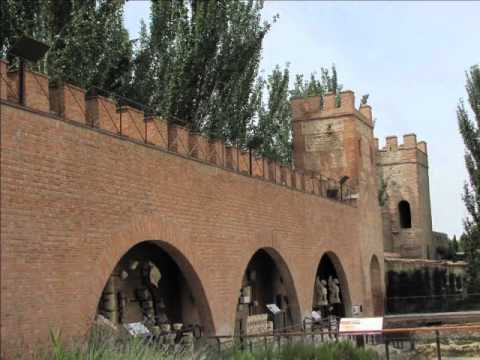
In order to arrive to that museum, you should follow your way by the road on your left—the one facing the façade of the Archbishop’s Palace—calle del Cardenal Sandoval y Rojas. Arriving to the middle of the street, you will cross a parking on your right and, just in front of it, the Burgo de Santiuste Interpretation Center—additional information will be provided later.
Continue walking and, on your right, you will pass by the entrance of the tower leading to the Antiquarium.
This tower has been totally restored and, once inside, you will be able to observe—properly ordered and with explaining signs—rests of the great and monumental stairs of Covarrubias and other fragments that would give you an idea of the splendor of the Archbishop’s Palace currently occupied by the bishopric of Alcalá. Besides, you could have a walk through the battlements, at the top of the wall, that communicates one tower with the following.
Burgo de Santiuste Interpretation Center
In the same street you can visit the Burgo de Santiuste Interpretation Center, which holds a permanent exhibition dedicated above all to Roman and Mediaeval Alcalá. The center was named after Burgo de Santiuste, one of the names of the city in the Middle Ages.
In its center, dedicated to its history, you can cover ten centuries of history visiting from the falling of the Roman Empire in 476 to the creation of the University of Cardinal Cisneros, in 1499.
In order to know more about Burgo de Santiuste Interpretation Center, click here.
Puerta de Madrid
Taking up again your walking by this street—that could seem not to be so relevant and too far from the urban bustle of the center—, you will reach Puerta de Madrid, slightly similar to the famous Puerta de Alcalá in Madrid, as it is influenced by its style.
Through Puerta de Madrid, you got out of the fortified city to start the journey to Madrid, as well as it happened on the opposite side with Puerta de Alcalá in Madrid. In fact, Calle Alcalá in Madrid is the longest of the capital and one of the oldest also. The door has its origin in the Madrid of the Habsburgs. It starts at Puerta del Sol, goes through Puerta de Alcalá and ends in the district of San Blas. The name of the door is obviously related with the fact that the path ended directly from the center of Madrid to Alcalá de Henares.
Facing the evidence that Puerta de Alcalá in Madrid is much more majestic than ours, there is who claims—not without a good dose of proud of being from Alcalá—that in the old period, Alcalá de Henares was much more important than the current Spanish capital, and that the lack of correspondence between their size is nothing apart from an evidence of the fact that it was more important for Madrid inhabitants to travel to Alcalá de Henares, than the other way around.
Puerta de Madrid holds also a cinema-story: place yourself under the arches of the door and think about the troops commanded by Spartacus, as it was where the famous movie with the same name was filmed.
The Walls of Alcalá de Henares
Puerta de Madrid and its walls are the postcard at the entry for all the people who arrive to Alcalá by car or bus accessing through Vía Complutense, the main entrance to Alcalá.
The walls got to have more than twenty towers, from which more than sixteen are preserved, and surrounded a piece of land of sixteen acres. It is eight centuries old and during a lot of time they defended the city from attacks of the Arabs or any other enemy, as it happened, for example, during the fights between the Archbishop Carrillo and the Catholic Monarchs.
In this walk, we propose to you to carry on keeping the wall always on your right. You will see that this route describes several bends, creating a curious contrast between the moving traffic and the calmness transmitted by the solid stone walls and the turrets you will observe walking around its sidewalks.
In order to know more of the walls and Puerta de Madrid, click here.
Open Air Museum of Sculptures
In this walking, not really long, besides admiring the glorious past of Alcalá represented in these secular walls, you will observe diverse cultures generally made on steel—especially prepared for supporting the elements— in the area of grass that separates the wall and the sidewalk and the cycling path.
This is the Open Air Museum of Sculptures, organized by the sculptor Pepe Noja—discipule of Pablo Serrano—, author of the sculpture of Manuel Azaña—placed on the roundabout with the same name next to the neighborhood of Nueva Alcalá, finished by Noja after the death of Serrano and opened in 1987.
In the Open Air Museum of Sculptures, there are around sixty sculptures by many different authors along the whole Vía Complutense. The route finishes at the crossing with Caballería Española street. Nobody, no the organizer nor the sculptors, got paid for their works. All the expenses from the casting, transport and placing were covered by the City Hall.
The Arch of San Bernardo
When the walls end and the buildings start, just in front of O’Donnell park—the biggest green lung of the city for decades—, you will find on your right a street starting under the arch of San Bernardo, so-called because of its placement next to the convent of Bernardas’ nuns.
This arch was precisely inaugurated after the construction of the convent as an opening of the wall— substituting the mediaeval puerta de Burgos, which was inside the vegetable garden of the convent. This door was demolished in 2006 and afterward restored. Enter by the arch and walk until the end of the street until you find a square on your right.
The Bernardas convent
In order to finish your walking by this part of the monumental Alcalá—placed on the northwest side of the main core of the historical center—nothing better than stopping in one of the most charming corners of the city: plaza de las Bernardas—placed on your right—and flanked by the Archbishop’s Palace and its turret of don Pedro Tenorio.
If you have time, visit the Bernardas convent ’ nuns that you will find on your right. Empty since many years ago, it possesses a splendid museum in its interior. The convent of the Cistercian Order is the most important work of the Spanish Barroque, and besides of its serene façade, its interior, of elliptic base—a very rare shape—, is covered by the biggest oval dome, of great beauty.
The convent holds the Religious Art Museum, founded in 1987, after the discovery of a hidden part by partition walls, and in which you can see several artistic jewels—as the chest of Carlos V, constructed with ebony and covered in silver by Philip II, who dedicated it to his father—, or the armchair of the founder archbishop of the convent, Cardinal Sandoval, decorated with golden and pseudo-precious stones.
In order to know more about the Bernardas convent , click here.
Regional Archaeological Museum
If you still want to make your walking longer, next to the convent you can reach the Regional Archaeological Museum of the Community of Madrid, where you will be able to explore the old pre-Roman and Roman past of Alcalá and the whole region, as well as some quite interesting temporary exhibitions available every year.
In order to know more about the Regional Archaeological Museum, click here.
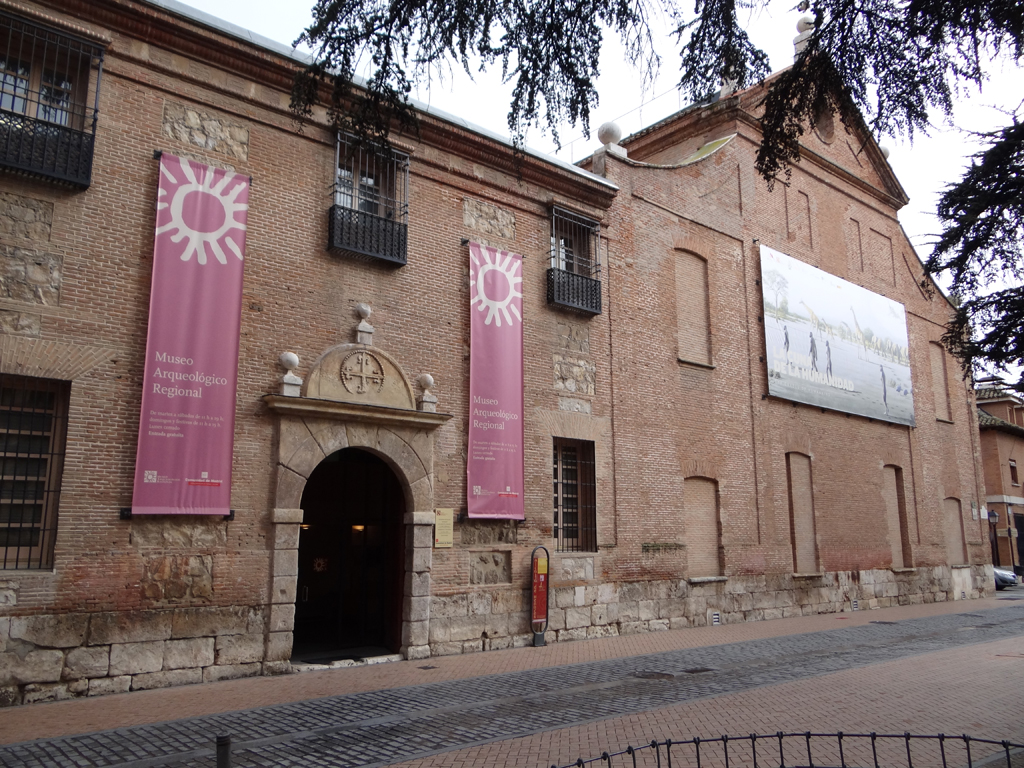
And this is the end of our visit. If you are tired, we recommend you to have a rest from your walking and finish it by watching the calm surroundings. Before having a great lunchor a good dinner thanks to the Complutensian gastronomy, nothing better than sitting on a stone bank at the square, under its stunning trees, to admire one of the most beautiful corners of Alcalá de Henares.
Additional Information:
- Audio Guide – Alcalá in just a Morning (First Part).
Sigue disfrutando de Dream Alcalá:
- Telegram: Recibe nuestras noticias y contenido exclusivo (clic aquí).
- Newsletter: Recibe cada tarde un correo con nuestras últimas noticias (clic aquí).
- YouTube: Suscríbete para ver nuestros mejores vídeos (clic aquí).
 Sé tú el periodista: envíanos tus fotos o noticias a través de Telegram.
Sé tú el periodista: envíanos tus fotos o noticias a través de Telegram.

